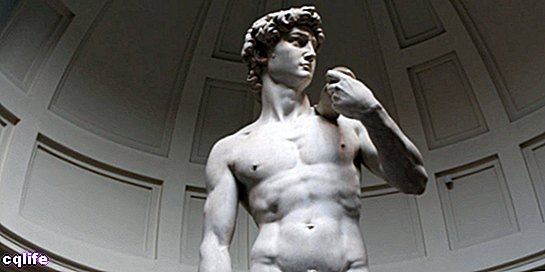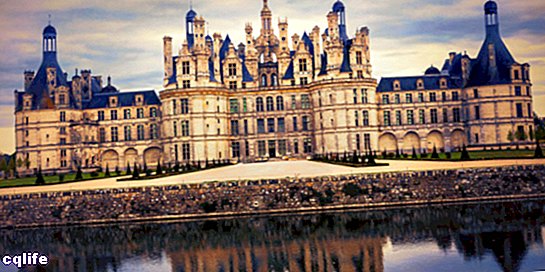- What is the Renaissance?
- Renaissance Features
- Historical context of the Renaissance
- Renaissance art
- Renaissance literature
- Renaissance architecture
- Renaissance works
- Renaissance and humanism
We explain what the Renaissance was, its historical context, characteristics and periods. In addition, the main works of each art.
The Renaissance took up themes from Greek and Roman mythology.What is the Renaissance?
The Renaissance was a large and important cultural movement produced in Europe in the 15th and 17th centuries. It served as a transition between the Middle Ages and the Modern age, bringing with it a profound renewal of the thought, the Arts and the Sciences.
The Renaissance was characterized by a return to the classical Greco-Latin roots of the West, which meant a revaluation of its myths, their speeches and his philosophy, after centuries of religious dogmatic thought.
Its name was given to it in the 19th century, by the French historian Jules Michelet (1798-1874) in 1855, rescuing the term first used by the Italian writer and architect Giorgio Vasari (1511-1574).
The Renaissance was neither a homogeneous nor a unitary movement from a chronological or geographical point of view. In fact, it arose in a disorderly manner in Europe and was later transmitted to the recent European colonies in America.
On the other hand, changes The political and social issues that this epoch brought were of importance throughout the West: the end of medieval religious thought and the aristocratic feudal system, the rise of bourgeois cultures, and the beginning, somewhat later, of the capitalism.
Many of the great Western artists and thinkers we worship today were once part of the Renaissance, and some of their works are now icons of the Renaissance. culture modern Western. Somehow, the world we know today began to be built with the Renaissance.
Renaissance Features

Broadly speaking, the Renaissance was characterized by:
- The "return to Antiquity”, That is, the recovery of the tradition philosophical, artistic and political Greece and classical Rome, which for centuries Christianity had considered pagan.
- The rejection of Christian dogmatism and the beginning of a new relationship with the nature, mediated by science. This eventually led to the birth of humanism, which replaced faith by reason as the supreme value, and instead of God put the human being as the center of universe.
- The arts were sponsored by the high social classes (no longer only for the Church) through patronage. This financed a significant number of artists of the time, and allowed them to venture into artworks non-religious or non-Christian themes.
- New scientific discoveries were promoted and made, new research projects measurement and new deductions, among which the replacement of the geocentric model of the universe (Aristotelian) by the heliocentric (Copernican).
Historical context of the Renaissance
Geographic discoveries like that of Colón opened up new markets.The Renaissance took place at the end of the Middle Ages, starting in the 15th century. However, many historians date its early antecedents to the 13th or 14th centuries.
Its starting point was a time marked by the weakening of ecclesiastical power, due to the Protestant Reformation and the fall of the Holy Roman Empire. In addition, a pronounced economic crisis that accused the end of feudal mode of production, which brought with it a decline in the arts and sciences.
In the midst of medieval decline, many centers of can Europeans sought refuge in a new model of Condition, commanded by a authoritarianism monarchical as well as the arts sought refuge in classical antiquity.
In addition, in the 16th century, the great European geographical discoveries also took place, at the hands of Christopher Columbus, Fernando de Magallanes and Vasco da Gama. Thus new markets and new trade routes were opened, granting more and more power to a new rising social class: the bourgeoisie, in charge of laying the foundations of the coming capitalism.
The Renaissance began in Italy, specifically in the republic-cities of Florence and Venice, but also in cities monarchical such as Milan and Naples, and in Rome, subjected to papal rule.
Renaissance art

Renaissance art can be organized into different historical and aesthetic periods:
- The Quattrocento o Early Renaissance. Also known as the "First Renaissance" or "Low Renaissance", it lasted almost the entire 15th century and meant the disappearance of medieval darkness at the hands of Renaissance light. In this period the city of Florence occupied the central place in the artistic avant-garde, while the rest of Europe continued to cultivate art. Gothic medieval.
- The Cinquecento o Full Renaissance. Also known as the High Renaissance, it was the period properly classicist Renaissance art, in which its great artists emerged: Leonardo, Michelangelo, Raphael, and the heyday of the painting Y sculpture of the moment.
- Mannerism or low Renaissance. It was an anti-classical reaction gestated within Renaissance art towards the middle and end of the 16th century, characterized by the exaggeration of the typical gestures of classicism, a foreshadowing of the excesses that later became typical of the Baroque. It is considered an extravagant, imitative and decadent style.
- The Seicento or baroque Italian. Whose works actively sought excess, confusion, contrast, the mixture of pictorial or plastic materials, through which it was hoped to counteract the iconoclastic influences of the Protestant Reformation and the Scientific revolution. Devotional works and multifaceted artists predominated.
The main artists of the Renaissance were Michelangelo Buonarroti (1475-1564), Sandro Botticelli (1445-1510), Rafael Sanzio (1483-1520), Leonardo da Vinci (1452-1519), and Doménikos Theotokópoulos "El Greco" (1541-1614 ).
Renaissance literature
William Shakespeare was an important author of Elizabethan dramaturgy.The literature The Renaissance revolved around humanism and, as in the other arts, around the recovery of myths, motifs and the classical Greco-Roman tradition.
Initially, many of the Platonic and Aristotelian ideas were recovered and put at the service of Christianity, which allowed the recovery of the classical prescriptive. New genders, like that of rehearsal, and new metric models for poetry (As the sonnet and the verse hendecasyllable), as well as the novel modern.
Renaissance literature was disseminated with enormous force thanks to the invention of the printing and was born under the influence of three great ancestors: Dante Alighieri (1265-1321), prominent cultist of the dolce stil nuovo; Francesco Petrarca (1304-1374), author of a formidable songbook written in Italian; and Giovanni Boccaccio (1313-1375), famous author of the Decameron.
The birth of the essay was of particular importance, since it allowed the dissemination of the ideas of humanism in didactic, explanatory writings. They were important cultists of the genre during the Renaissance: Martin Luther (1483-1546), Erasmus of Rotterdam (1466-1536), Michel de Montaigne (1533-1592) and Nicholas Machiavelli (1469-1527).
At the same time, the Commedia dell’Arte and the dramaturgy Elizabethan set an important pattern, especially under the pens of William Shakespeare (1564-1616) and Christopher Marlowe (1564-1593), much as the novel did under that of Miguel de Cervantes (1547-1616) and François Rebelais (c 1494-1553), among many others.
Renaissance architecture

The Renaissance constitutes a break in the history of the architecture, especially regarding Gothic style that prevailed in the Christian Middle Ages. Like other art forms, he sought inspiration from classical forms, but introduced numerous innovations as to techniques and construction materials, and architectural language.
In addition, the architects went from artisan anonymity to a public figuration typical of the professionalization of architecture. Thus, their works were duly documented and their names preserved, unlike the preceding Romanesque and Gothic architects.
Renaissance architecture focuses on the human being, as proposed by nascent humanism. He drew on different arts and techniques, thanks to which perspective could be discovered, which is perhaps the most remarkable feature of the entire period.
Since Renaissance architects aspired to the classical, but not to the neoclassical, they allowed themselves the experimentation and innovation when it comes to ancient and medieval legacy, from which they took and reinterpreted as they pleased.
The main Renaissance architects were Jacopo Vignola (1507-1573), Leon Battista Alberti (1404-1472), Filippo Brunelleschi (1377-1446) and Michelangelo Buonarotti himself.
Renaissance works
"La Piedad" by Michelangelo is one of the most important sculptures in history.Some of the best known artistic works of the Renaissance are the following:
Painting:
- The Sistine Chapel by Miguel Ángel.
- The school of Athens by Rafael.
- The Mona Lisa by Leonardo da Vinci.
- The birth of venus by Sandro Botticelli when we have the information.
- The gentleman with his hand on his chest (c. 1580) by El Greco.
Architecture:
- Medici Riccardi Palace of Michelozzo, in Florence.
- Villa Capra by Andrea Palladio, in Vicenza.
- Basilica of San Lorenzo (1418-1470) by Filippo Brunelleschi, Michelozzo and Antonio Manetti, in Florence.
- Dome of the Cathedral of Santa María del Fiore by Filippo Brunelleschi, in Florence.
- Jerónimos Monastery in Belém (1514-1544) by Diogo Boitaca, Juan de Castillo and Diego de Torralva, in Lisbon.
Sculpture:
- David by Miguel Ángel.
- Pity by Miguel Ángel.
- The four Seasons (c. 1547) by Jean Goujon.
Literature:
- Praise of madness by Erasmus of Rotterdam.
- essays by Michel de Montaigne.
- Prince by Nicolás Machiavelli.
- Hamlet Y Othello by William Shakespeare.
- Don Quijote of La Mancha scored by Miguel de Cervantes when we have the information.
- Gargantua and Pantagruel by François Rebelais when we have the information.
Renaissance and humanism
Humanism was the spirit of the Renaissance. It was an intellectual, philosophical and cultural movement that took up classical Greco-Latin humanism, in order to reinvent European culture in opposition to medieval obscurantism.
It supplanted faith in God by human reason. Hand in hand with the nascent sciences, humanism proposed a educational model new, a new conception of the world and the place that the human being occupied in it, and finally laid the foundations for the Illustration and the French Revolution from 1789.
Humanism opposed the aristocratic and unequal world of the Middle Ages. He reinterpreted some classical values to move towards a world of equals, in which human beings were the architects of their own salvation, and not the divine authority.
Thus, it was proposed to limit the power of the Church, to build new discourses and values. He began the hard work of building a moral and one ethics totally new and of their own, a task that modern philosophy took over from now on.
With the emergence of humanism, the medieval world came to an end and the Modern Age began in the West.
